
Vegetables & Herbs Plant structures augmented for human use


Vegetables & Herbs Objectives
-
Describe plant structures and functions, including the parts of plants that we consume as vegetables.
-
List the vegetables developed from Brassica oleracea.
-
Explain how herbs and other plants defend themselves against herbivores.
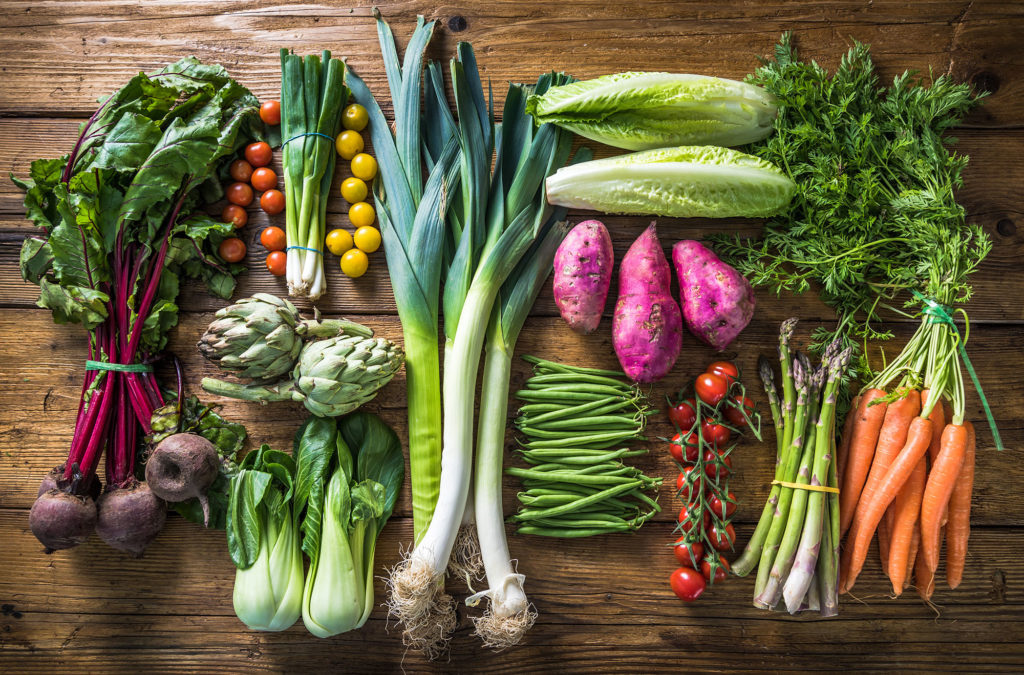
From the last guide, which of the foods in this photo are not vegetables?
answer: tomatoes & beans
(fruit)
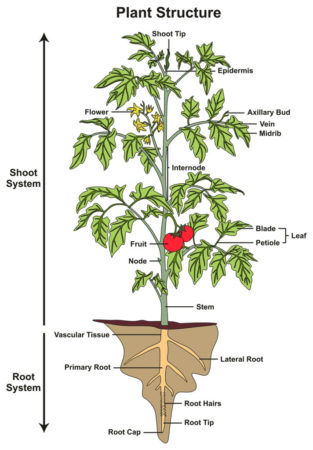
Vegetables are derived from specific leaves, stems, or roots that have been bred over generations to improve size, taste, and nutrient quality.
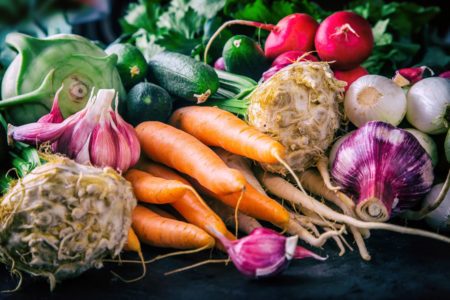
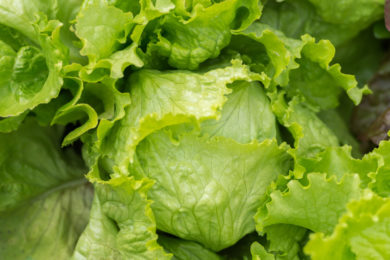
Leaf
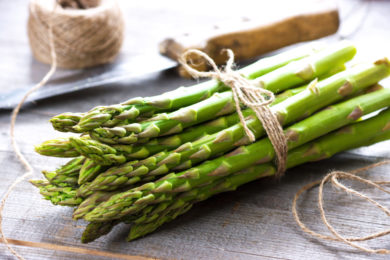
Stem
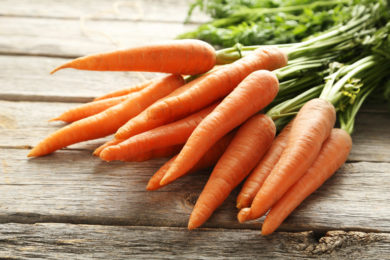
Root
Leaves
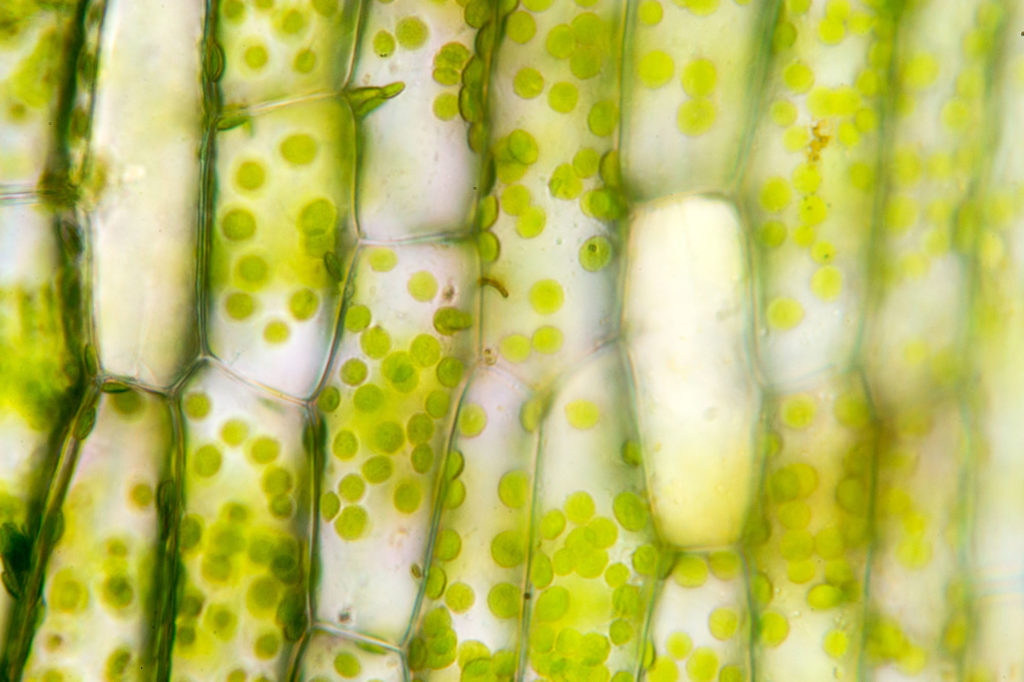
The common green color of leaf vegetables is due to chlorophyll pigments that absorb light for photosynthesis.
Chlorophyll is found in chloroplasts, they are the green spheres within the cells in this photo (400x magnification).
Plant cells have distinctive structures and functions. This video provides an overview of common plant cells found in leaves, stems, and roots.
Leaves are comprised or tissues, groups of cells that have related functions.
This poster shows the microscopic views that match the model in the previous video.
Stem
Stems support plants and transport nutrients. This video provides an overview of stems.
Monocot and dicot stems have different arrangements of vessel bundles. The vessels inside serve the same basic functions.
Transpiration Experiment
Results
Strawberries have runners, also called stolons. These horizontal stems grow along the ground and asexually produce offspring. These clones are genetically identical to the parent plant.
Roots
Roots stabilize plants, store sugars, and draw water and nutrients out of soils. This video provides an overview of roots.
This poster compares and contrasts monocot and dicot root tissues.
Stem or root? Not all vegetables called “potatoes” are from the same part of plants.
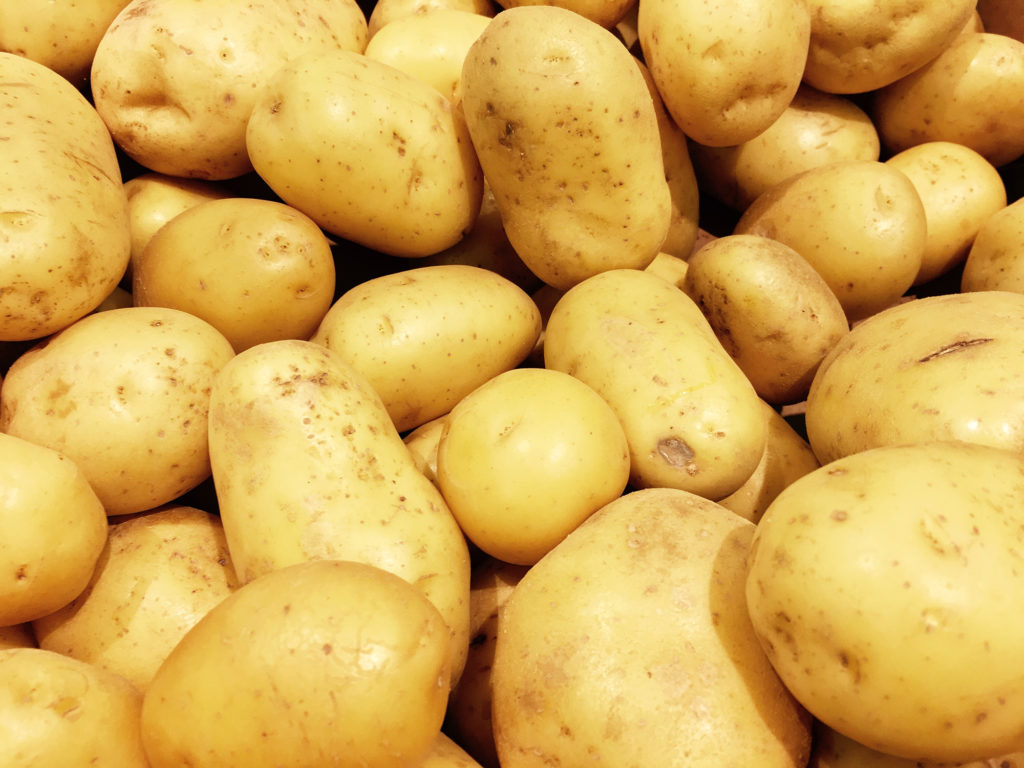
Potatoes are modified stems and sweet potatoes are modified roots of a different species. Generally roots have more nutrients than stems.
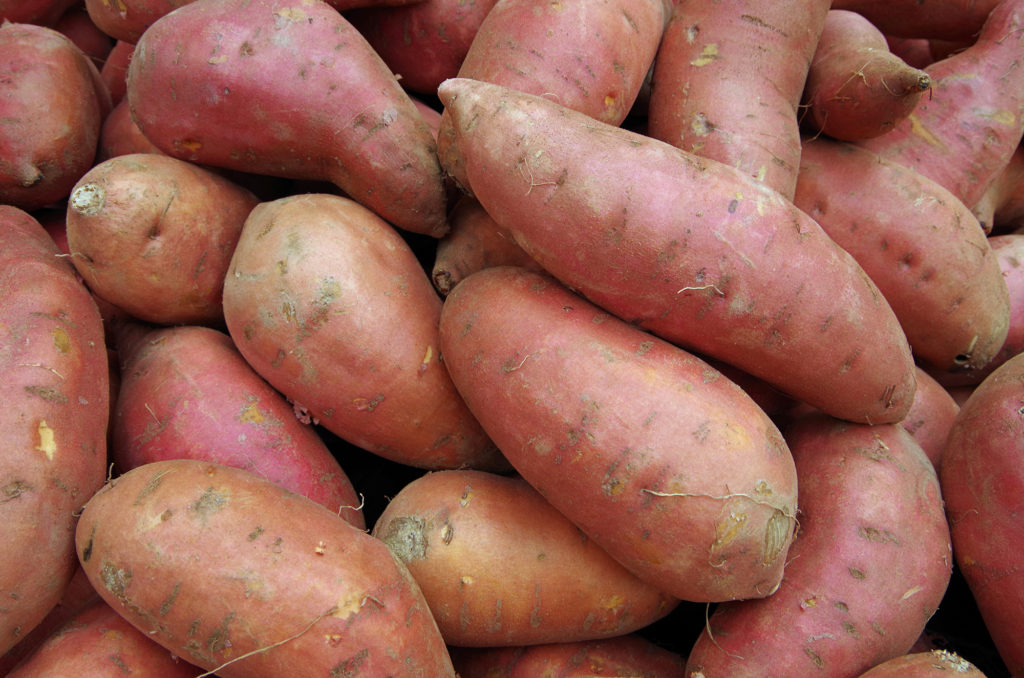
Brassica vegetables
Several vegetables have been developed from a single species: Brassica oleraceae, the wild cabbage. Selective breeding of parent plants with desired traits over many generations led to larger leaves, or buds, or stems.
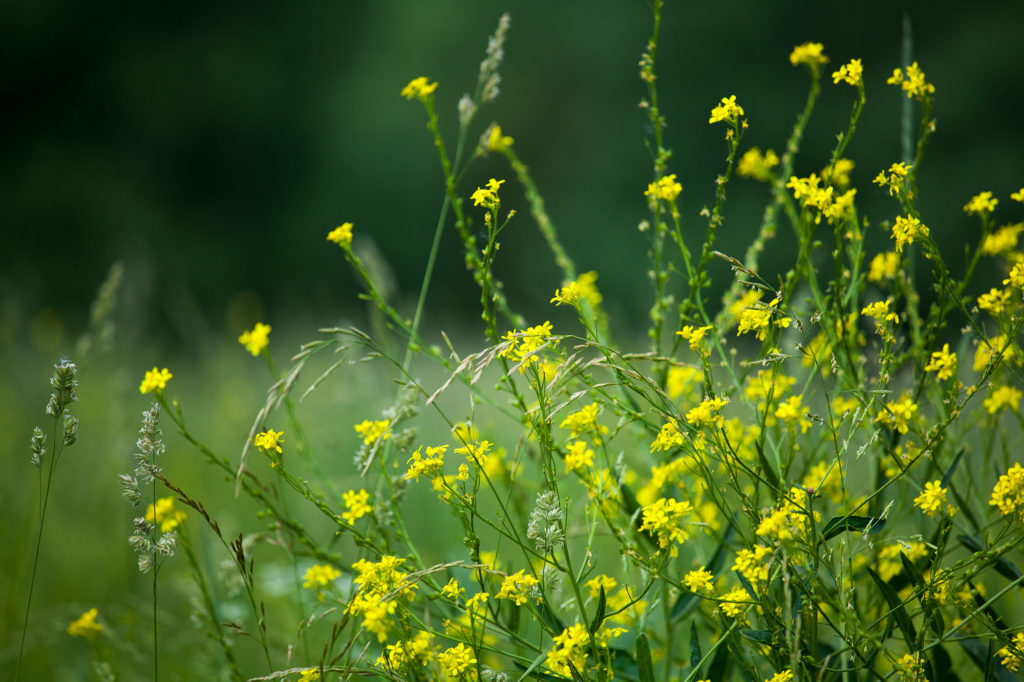
This video compares some of the Brassica oleracea vegetables.
Varieties bred from the wild cabbage species include: cabbage (leaf), kale (leaf), broccoli (flower buds), cauliflower (flower buds), and Brussels sprouts (axial buds).
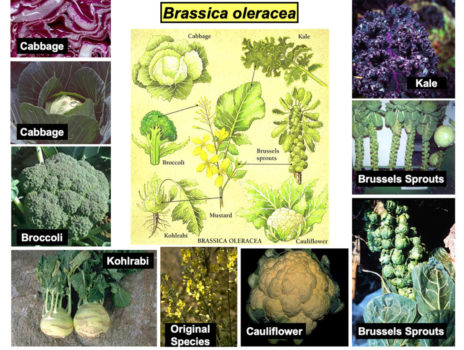
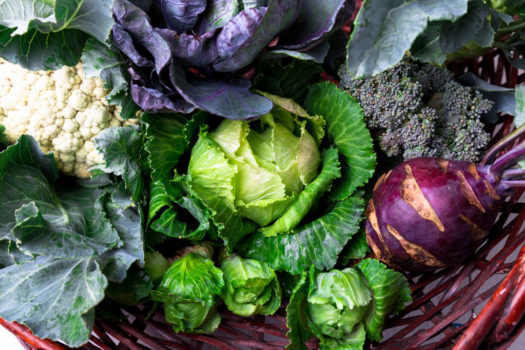
Herbs
Herbs are plant structures that are typically used in small quantities to enhance food flavor.
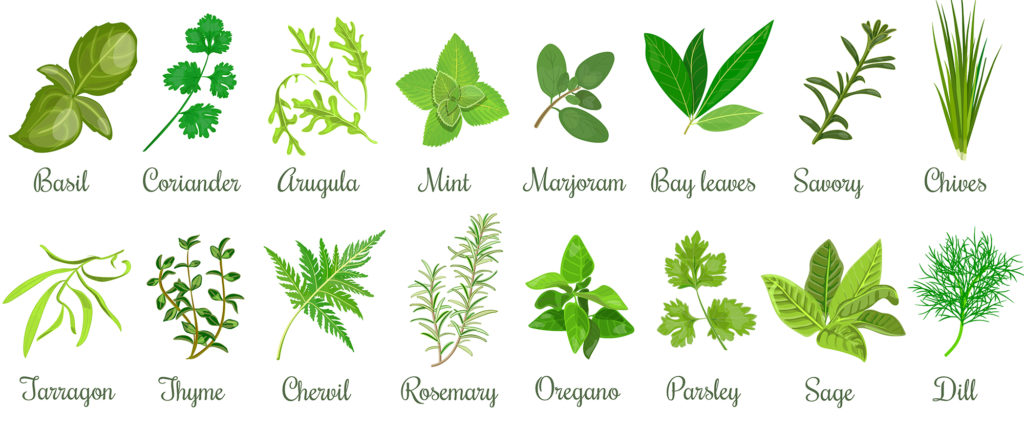
This video discusses how thyme plants use chemicals and small hair-like (trichome) mechanical structures to repel potential pests.
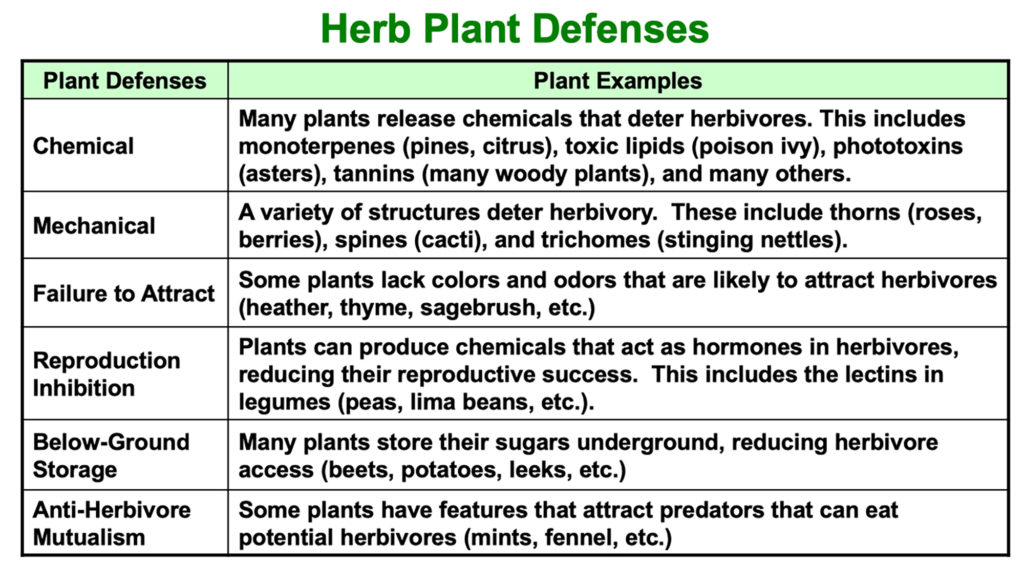
Herbs and other plants have diverse defenses against potential herbivores.
Rosemary is used as a culinary herb and what we perceive as pleasant smell and taste is a repellant to many insect species.
We often get asked questions about using herbs for medicinal purposes. Research funds typically go to treating potentially dangerous diseases, and more limited funding goes towards augmenting health. As a result, many uses of herbs have not been substantiated with human clinical trials.
This is the end of Guide 1B’s content. After you check your knowledge over the material, proceed to the product page.
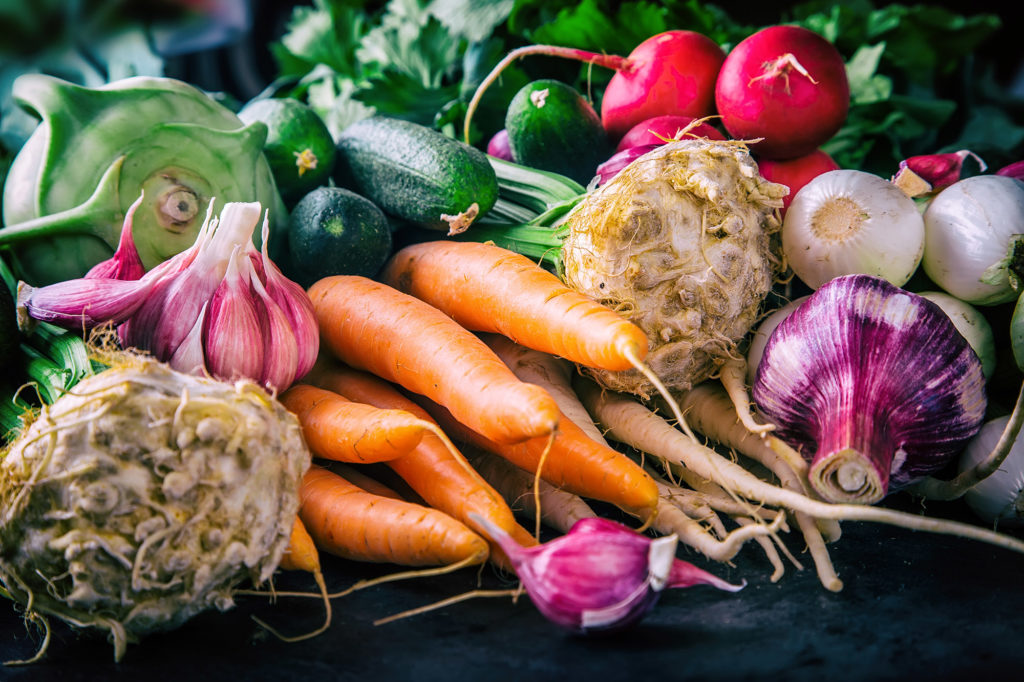
Check your knowledge. Can you:
-
describe plant structures and functions, including the parts of plants that we consume as vegetables?
-
list the vegetables developed from Brassica oleracea?
-
explain how herbs and other plants defend themselves against herbivores?



